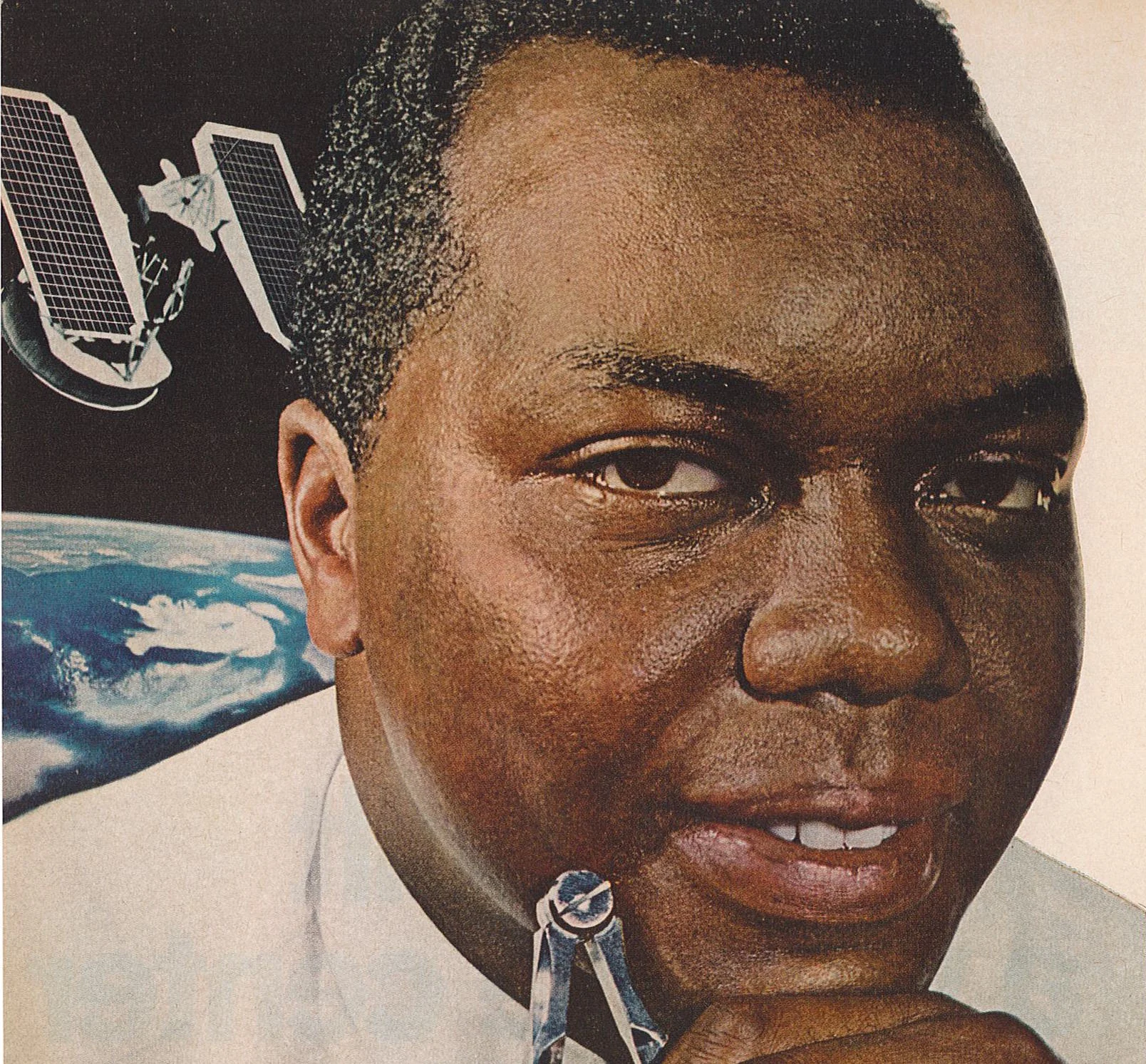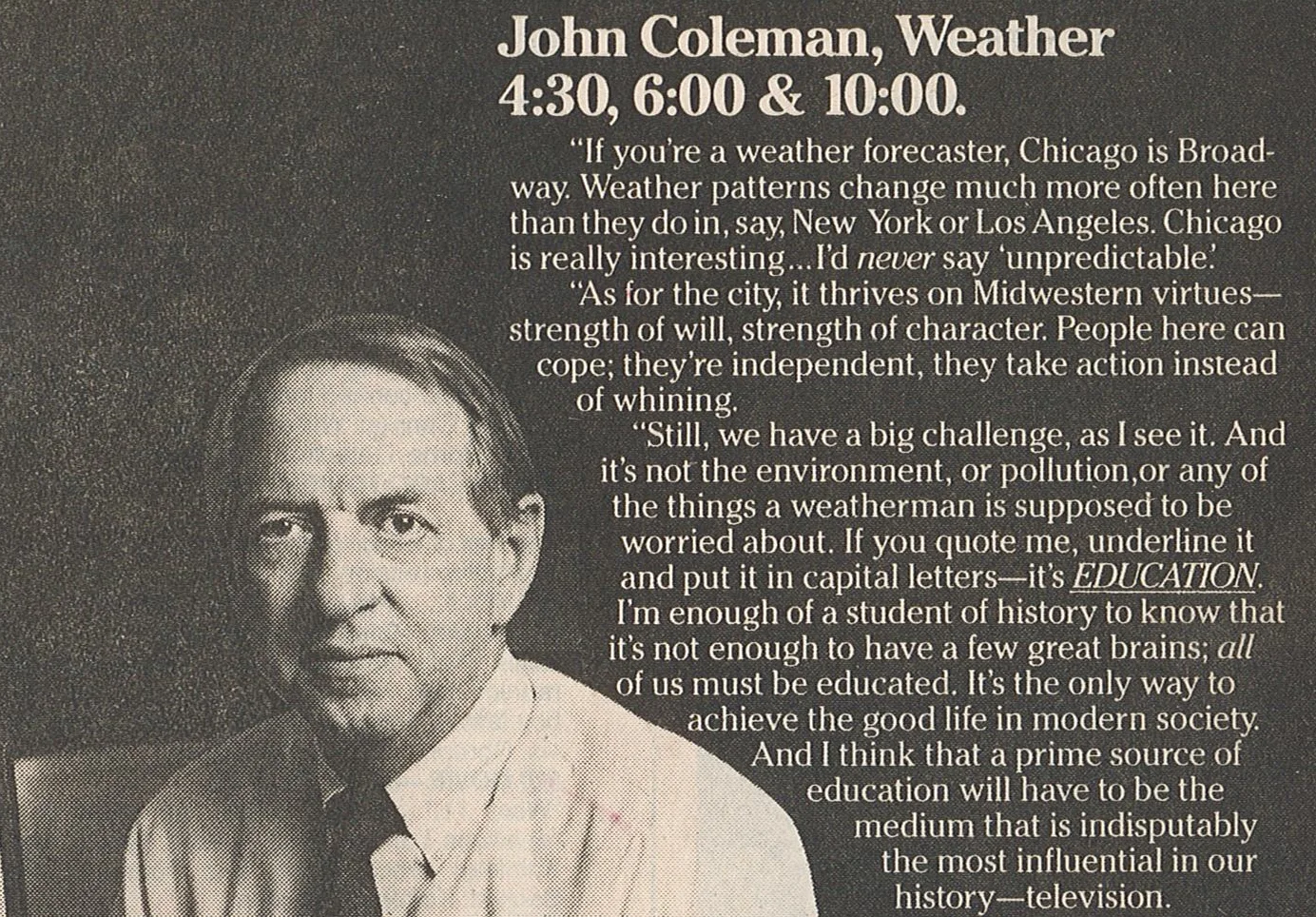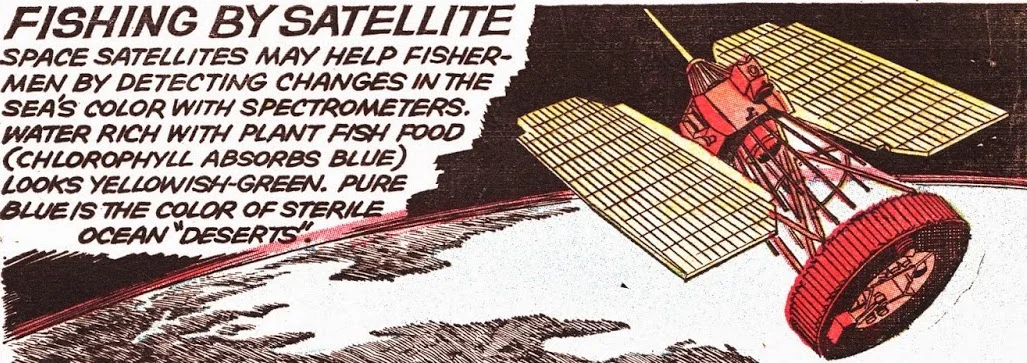The Computer Business, c.1968
At the height of the civil rights era in 1968, as black people were increasing protesting for economic opportunity, not just legal equality, IBM’s admen probably counted on Nat Woodrick’s race to surprise white readers. Even more surprising, in the context of the times, is IBM’s suggestion that Woodrick was normal: “Nat Woodrick is typical of the thousands of men and women in the industry who, along with their customers, continually search for new ways to use computers.”
This advertisement was part of a series of ads that juxtaposed extreme close-up portraits with jarring text, all in an effort to challenge readers’ ideas about the computer business. Other ads included a white physicist working to reduce the cost of data processing, and a white engineer solving a problem in cacography (bad handwriting or incorrect spelling; I looked it up).
While Woodrick’s race was unusual for a meteorologist of this era, Woodrick’s work well illustrates a central development in meteorology during the 1960s and 1970s. By integrating satellites and computers, meteorologists became capable of apprehending a more truly global atmosphere. As Woodrick described his work in this ad, “weathermen need more precise facts about the atmosphere—millions per day from all over the world. My job is to see how computers can help.” By measuring the deflection of starlight, satellite-based instruments developed proxy information that could be processed and translated by computers into “a stream of precise pressure readings which are vital to forecasting.”
Historian Paul N. Edwards argues that computerized systems like this were crucial to making atmospheric data more uniformly global, rather than an amalgam of data from disparate observation points. These kinds of integrated computer and satellite systems form a “knowledge infrastructure” essential to contemporary weather forecasting and climate change science.
Nathaniel Woodrick (1933-2015) had a lengthy career in meteorology. After serving in the Air Force, he earned a degree in physics from Tennessee University, and later did graduate work at Catholic University of America in aerospace engineering. He worked on the development of radiometric spectral imaging, and presented papers exploring using satellites to determine wind fields on Earth and Mars. During the 1960s and 1970s, he worked for IBM, developing techniques for extracting meteorological information from remote sensing data. After working in IBM’s federal division at its space systems center, by 1998 he had become the Director of the Institute for Science, Space and Technology at Howard University in Washington D.C. According to an interview with Ebony magazine in 1967, his hobby was studying “Negro history.”
Woodrick was also featured in at least two other IBM ads. A 1965 ad in the Pittsburgh Courier (a prominent African-American newspaper) highlighted IBM’s interest in hiring college graduates. Six years later, he starred in an ad in the Louisville, Kentucky Courier-Journal, under the headline “Everybody talks about the weather, this IBM man does something about it.” Both of these ads feature prominent photos of Woodrick, smiling.
This image presented an interesting research challenge for me. I bought it on eBay, from a vintage advertisement dealer who cuts images out of magazines. Sometimes dealers include the magazine name and issue date; other times the identifying information can be found on the flip side of the page. But here I had to use Google Image Search to find other IBM ads of a similar style and format, one of which seems to have appeared in The Atlantic’s November 1967 issue. The background image also gives a loose chronological clue. It’s clearly one of the early Nimbus satellites, part of the second generation of US weather satellites initially launched in 1964. You can see why they were nicknamed “butterfly.”
Learn More:
“Speaking of People: Satellite Meteorologist,” Ebony (December 1967): p 7.
Paul N. Edwards, A Vast Machine: Computer Models, Climate Data, and The Politics of Global Warming (MIT Press, 2010)
June Bacon-Bercey, “Statistics on Black Meteorologists in Six Units of the Federal Government,” Bulletin of the American Meteorological Society v 59, no. 5 (May 1978): 576-580.







